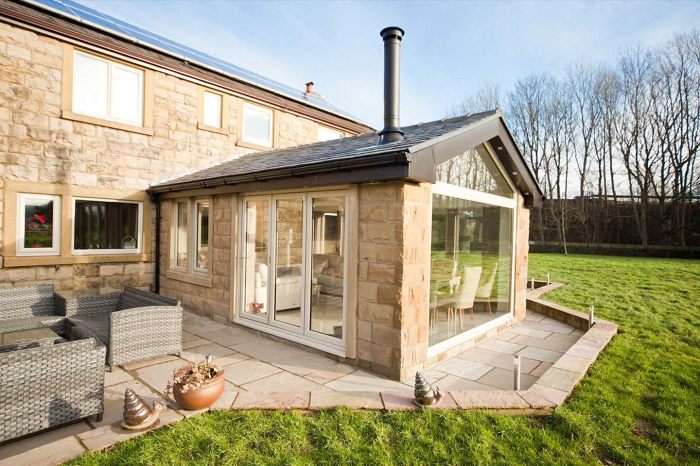Extensions are of two types – capital and non-capital. Capital extensions include warm rooms that have a full foundation, insulated walls and roofs and are necessarily equipped with at least electricity and heating.
They can also have water supply and sewerage – brought both directly from the house and from external connection points, explains Alexander Petrov, founder, managing partner of NORDHUS. Such extensions often serve to increase the area of the room to which they adjoin, and can be a separate room for almost any purpose: an entrance hall, a kitchen, a pantry, a living room, a winter garden, a living room, a technical room and a warm garage, the expert adds.
Non-capital extensions may include a summer veranda or porch. Such an extension has a “lighter” foundation or none at all, it is usually not insulated, says Alexander Petrov.
If the extension should serve as an additional room, then it is desirable to perform it on a solid foundation, with insulated floors, walls and ceiling. As materials, you can use both wood (in solid wood or in the form of a frame filled with insulation), and porous brick, aerated concrete. It is better to choose the same material that was used in the construction of the main house, says Alexander Petrov.
Any extension to the house – capital or not – is considered a constructive change to the existing structure and, in accordance with paragraph 14 of Art. 1 of the Town Planning Code, is a reconstruction. Depending on whether the extension is capital or not, the process of its registration is different, says lawyer, head of Saunin Law Practice Andrey Saunin. A non-capital extension can not be documented, this will not lead to sanctions. But if the extension is capital in nature, it must be registered.
Why you need to register an extension
The total area of the object changes. New parameters must be registered in case the house is subsequently sold or inherited.
During construction, all construction standards must be observed, including indents from neighboring sections (3 m). In case of violation, the extension may be recognized as unauthorized construction.














